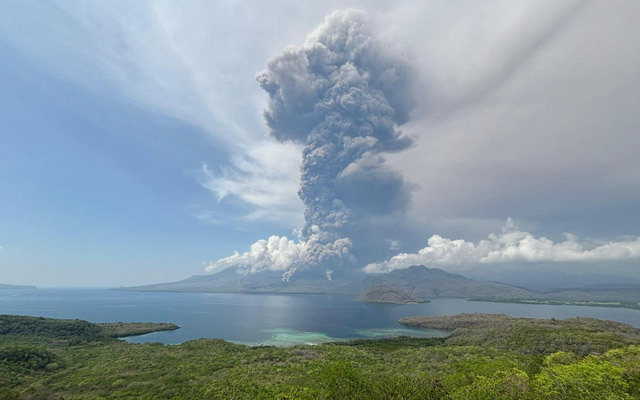Several airports in East Nusa Tenggara, Indonesia, have temporarily closed, and dozens of flights have been cancelled following eruptions from Mount Lewotobi Laki-Laki in East Flores.
AirNav Indonesia issued an update on the affected airports, confirming that Gewayantana Larantuka Airport, Wunopito Lewoleba Airport, Tambolaka Airport, and Waingapu Airport remain operational. However, H. Hasan Aroeboesman Airport in Ende, Frans Seda Maumere Airport in Sikka, Soa Airport in Ngada, and Frans Sales Lega Airport in Ruteng are currently closed.

Komodo International Airport in Labuan Bajo, which was temporarily closed, reopened on Tuesday but is not operating at full capacity. Several airlines, including AirAsia and Lion Air Group, have cancelled flights.
The highest level aviation alert remains in effect, restricting flights below seven kilometres above the volcano and advising aircraft to remain prepared for potential ash interference, according to the Volcanology and Geological Disaster Mitigation Centre and local officials.
Continuous eruptions of Mount Lewotobi Laki-Laki, which began with a small eruption on November 3, have escalated into a major eruption. According to the disaster agency, the disaster has claimed the lives of nine people, left 31 severely injured, and forced more than 12,000 residents to evacuate.
On Tuesday, Mount Lewotobi Laki-Laki released an ash column reaching up to 9,000m above the crater. As volcanic activity remains intense, authorities have widened the exclusion zone, expanding the hazardous area around the crater from seven kilometres to nine kilometres.
“While several airports are temporarily closed, authorities have mobilised ferries and other sea transport options to facilitate the movement of people and goods until air travel resumes,” explained Budi Rahardjo, head of the Ministry’s Public Communication Bureau, in an official statement.
To address the airport closures, the government has adjusted the route of the KM Egon ferry, which typically operates the Waingapu-Lembar route, to now serve Labuan Bajo-Lembar. Additional vessels, including a roll-on/roll-off ferry from Dharma Lautan, have been deployed to boost passenger capacity for evacuations. These ferries are transporting passengers from Labuan Bajo to nearby unaffected airports, such as those in Bima and Lembar, for onward travel.
More than 15 speedboats have been activated to assist in evacuating tourists and local residents, directing them to unaffected airports such as Lembar or Lombok. Additionally, a coastal patrol vessel, the KNP Chundamani, set out from Surabaya early Monday morning, with an anticipated 30-hour journey to Labuan Bajo, to further support these operations. “To alleviate the disruption, discussions are underway to increase flight frequencies at nearby unaffected airports, such as Lombok International Airport,” shared Budi.
Meanwhile, the Ministry of Tourism has swiftly activated a Tourism Information Centre through the Labuan Bajo Flores Authority Agency to assist tourists affected by the eruption.
“We also opened an evacuation post for tourists affected by the closure of Komodo International Airport,” said Hariyanto, deputy for destination and infrastructure development of the Ministry of Tourism, in a press conference.
As part of the response, the ministry is coordinating with the Indonesian Hotel and Restaurant Association to provide discounted accommodation for tourists impacted by the disruption.
“We are working closely with local governments, the Regional Disaster Management Agency, and the tourism industry to ensure the safety and well-being of visitors and the surrounding communities near the mountain,” he added.
In light of the ongoing crisis, several key events, including the International Golomori Jazz Festival, have been postponed until early 2025. The ministry continues to prioritise safety and implement effective mitigation measures, according to Hariyanto.











